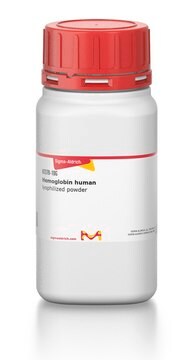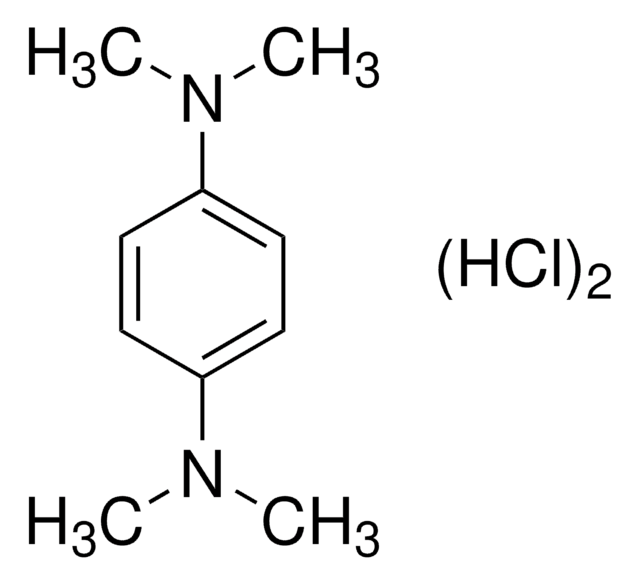C5499
Cytochrome c Oxidase from bovine heart
5 mg protein/mL
Sinónimos:
EC 1.9.3.1, Ferrocytochrome-c:oxygen oxidoreductase, Complex IV
About This Item
Productos recomendados
origen biológico
bovine heart
Nivel de calidad
formulario
buffered aqueous solution
actividad específica
≥20 units/mg protein
mol peso
300-350 kDa by gel filtration
características de los productos alternativos más sostenibles
Waste Prevention
Design for Energy Efficiency
Learn more about the Principles of Green Chemistry.
sustainability
Greener Alternative Product
concentración
5 mg protein/mL
categoría alternativa más sostenible
, Enabling
Condiciones de envío
dry ice
temp. de almacenamiento
−20°C
Descripción general
Cytochrome c oxidase contains 13 subunits, encoded by mitochondrial genes and nuclear genome. It is comprised of two heme groups (Fea and Fea3) and two copper centers, CuA and CuB.
We are committed to bringing you Greener Alternative Products, which adhere to one or more of The 12 Principles of Greener Chemistry. This product has been enhanced for energy efficiency and waste prevention when used in biofuel cell research. For more information see the article in biofiles.
Aplicación
- to study the effect of oxidized glutathione (GSSG) on the number of total free cysteines
- in a histochemical assay to measure CcO activity in tissue sections
- to study the redox reactions of cytochrome c in isolated mitochondria exposed to blue or red lasers using resonance Raman spectroscopy
Acciones bioquímicas o fisiológicas
Definición de unidad
Forma física
Código de clase de almacenamiento
12 - Non Combustible Liquids
Clase de riesgo para el agua (WGK)
WGK 3
Punto de inflamabilidad (°F)
Not applicable
Punto de inflamabilidad (°C)
Not applicable
Certificados de análisis (COA)
Busque Certificados de análisis (COA) introduciendo el número de lote del producto. Los números de lote se encuentran en la etiqueta del producto después de las palabras «Lot» o «Batch»
¿Ya tiene este producto?
Encuentre la documentación para los productos que ha comprado recientemente en la Biblioteca de documentos.
Los clientes también vieron
Nuestro equipo de científicos tiene experiencia en todas las áreas de investigación: Ciencias de la vida, Ciencia de los materiales, Síntesis química, Cromatografía, Analítica y muchas otras.
Póngase en contacto con el Servicio técnico






